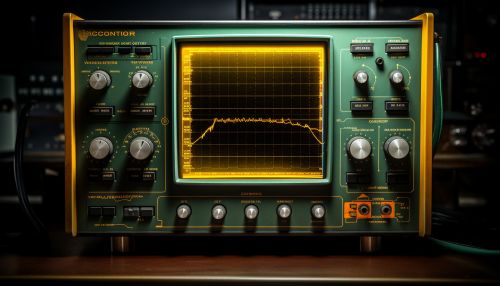Amplitude Modulation
Introduction
Amplitude Modulation (AM) is a modulation technique used in electronic communication, most commonly for transmitting information via a radio carrier wave. AM works by varying the strength (amplitude) of the carrier in proportion to the waveform being sent, which is typically derived from sound. This waveform may correspond to sounds (such as speech or music), light intensity (for video), or sensor readings.
History
The history of amplitude modulation dates back to the early 20th century. The first experimental AM transmissions began in the early 1900s. However, it wasn't until the 1920s that AM radio broadcasting became widespread. The technology was developed and refined by numerous inventors and scientists, including Fessenden and De Forest, who made significant contributions to its early development.
Principles of Amplitude Modulation
In amplitude modulation, the amplitude (signal strength) of the carrier wave is varied in proportion to that of the message signal, such as an audio signal. This technique contrasts with frequency modulation, in which the frequency of the carrier signal is varied, and phase modulation, in which its phase is varied.
AM is used in many forms of communication, including in broadcasting and in two-way radio. It is also used for single-sideband modulation, which is used in amateur radio and is a method of producing AM signals that take up less bandwidth than full-carrier AM signals.
Mathematical Representation
The mathematical representation of an amplitude-modulated wave is a function of time. The carrier wave, message signal, and modulated wave can all be represented mathematically, allowing for a detailed analysis of the modulation process.


Modulation Index
The modulation index (or modulation depth) in AM systems is defined as the ratio of the peak amplitude of the modulating signal to the peak amplitude of the carrier signal. This is an important factor in determining the bandwidth and power requirements of the transmission.
Types of Amplitude Modulation
There are several types of amplitude modulation, including standard (or high-level) AM, low-level AM, double sideband AM (DSB-AM), single sideband AM (SSB-AM), and vestigial sideband AM (VSB-AM). Each type has its own advantages and disadvantages, and is used in different applications.
Applications
Amplitude modulation has numerous applications in various fields. It is used in commercial broadcasting, two-way radios, sound broadcasting, and in the aviation industry for air traffic control communication. Despite the advent of more advanced modulation techniques, AM remains in use in many parts of the world.
Advantages and Disadvantages
Like any modulation technique, amplitude modulation has both advantages and disadvantages. Its main advantage is its simplicity, which makes it easy to implement and understand. However, it is less efficient than other modulation techniques, such as frequency modulation or digital modulation techniques.
